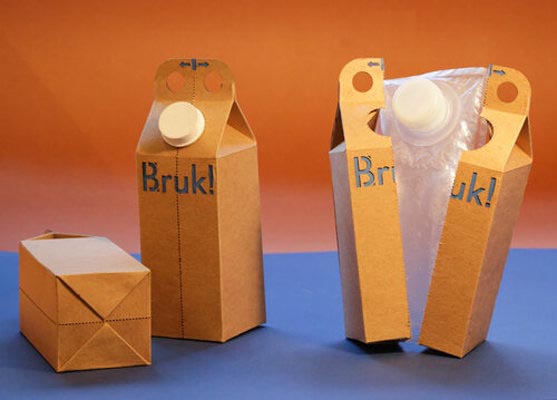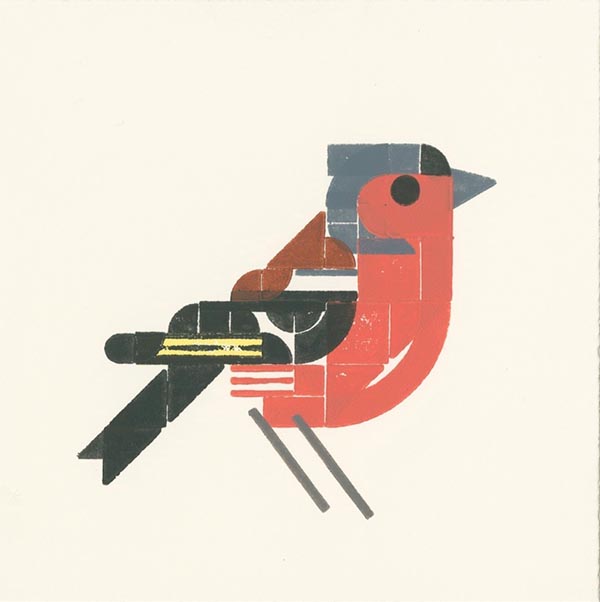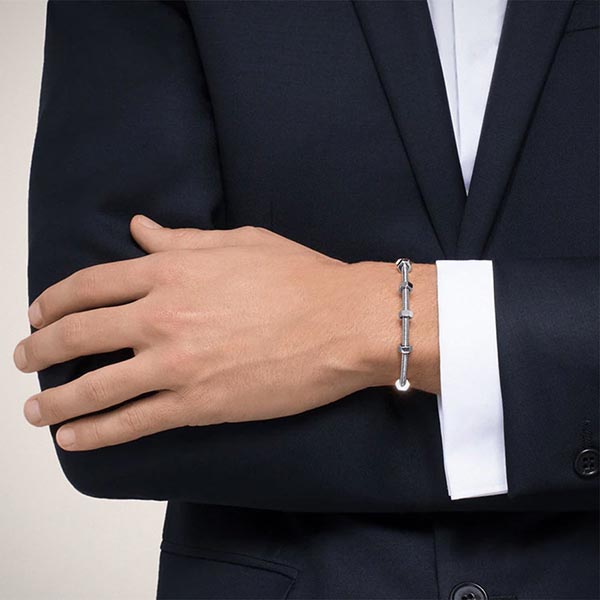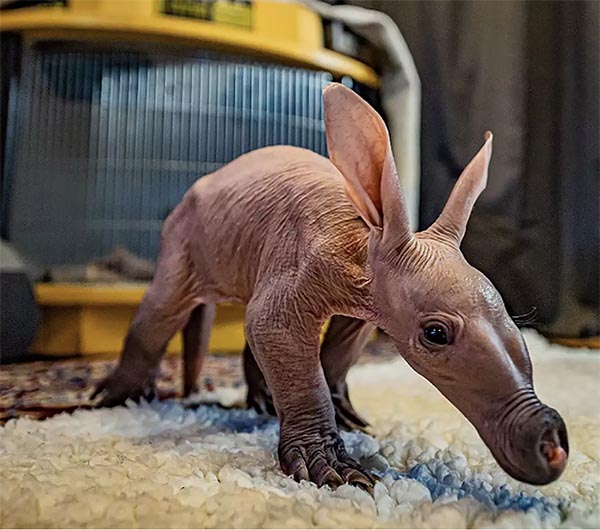Your Friday Compilation of Mel Blanc Characters Yelling
Losing Their Shirts—And Vice Versa
We all know about on-demand printing and, especially in textiles, print-on-demand is a growing trend. However, sometimes the “time” in “just-in-time” is just too timely. Take, for example, the Super Bowl (or any major sporting event championship game). You probably noticed that within seconds of the game ending, T-shirts and other gear festooned with the L.A. Rams logo appeared on the sidelines, and shops were carrying them literally the next day—after all, no one is going to wait a week or more to get a Super Bowl champions shirt. So, is this evidence that the Super Bowl is rigged in advance? Or, alternately, that a fleet of Kornit presses are pumping out swag in the locker room? Of course not; as we all know, both teams’ championship gear is mass printed before the big game. Which begs the question: what happens to the losing team’s apparel? Is it just tossed and, if so, is it the environmental nightmare one would think?
Mental Floss has an article in which they point out that a lot of this excess merchandise in fact goes to charity.
Good360, a charitable organization based in Alexandria, Virginia, handles excess consumer merchandise and distributes it to those in need overseas. The losing team's apparel—usually shirts, hats, and sweatshirts—will be held in inventory locations across the U.S. Following the game, Good360 will be informed of exactly how much product is available and will then determine where the goods can best be of service.
"We like to underscore that this is a solution that drives both social impact and human dignity [by] providing high quality, needed goods to those who might otherwise go without," Shari Rudolph, Good360 chief development and chief marketing officer, tells Mental Floss, "as well as a positive environmental impact [by] keeping usable goods out of landfills or from otherwise going to waste."
Rudolph says there's no exact count of apparel just yet. But in the past, the merchandise has been plentiful. Based on strong sales after the Chicago Bears’s 2007 NFC Championship win, for example, Sports Authority printed more than 15,000 shirts proclaiming a Bears Super Bowl victory well before the game even started. And then the Colts beat the Bears, 29-17.
Good360 took over the NFL's excess goods distribution in 2015. For almost two decades prior, an international humanitarian aid group called World Vision collected the unwanted items for MLB and NFL runners-up at its distribution center in Pittsburgh, then shipped them overseas to people living in disaster areas and impoverished nations.
So “fast fashion” doesn’t have to have a negative impact.
Dogg Daze
well i for one am SHOCKED https://t.co/OLxsJbxwbD
— Ursula Perano (@UrsulaPerano) February 14, 2022
Superb Owl
Boing Boing announced its own 2022 Superb Owl winner: a lovely owl decanter.

Actually, there should be an NFL team named the Owls. Washington missed a great opportunity here.
Milking It
You know what? I’ll just go with the cow thanks pic.twitter.com/nGlEG8mZtN
— MF FairyPrincessSmoo (@Smooheed) February 15, 2022
If It Ain’t Bruk, Fix It
Although paper-based containers can be a more sustainable option than plastic, some paper cartons can be difficult to recycle. Such was the thesis of industrial designer Pushan Panda, who has devised a new concept for recyclable beverage containers. Called Bruk, it’s meant to replace the packaging for beverages that come in mixed plastic/paper containers, like juice boxes and other containers that resemble milk cartons. Via Core77:
Panda’s Bruk design thus consists of an HDPE, Doi-pack-like sleeve inside a paperboard carton-shaped housing.
“When it’s time to recycle it, the consumer simply tears Bruk in half, releasing the HDPE liner so it can be recycled separately from the cardboard. This process is fast, simple and fun. We designed Bruk to be intuitive and inclusive, easy for everyone regardless of physical ability. Bruk is as convenient and easy to use as a conventional carton, but uses less plastic than a plastic carton and is 100% recyclable with conventional equipment unlike paper cartons.”

The First in What Will No Doubt Be a Series
Difficult situation on campus. Traffic jam of automated food delivery robots, apparently all stuck behind a carelessly discarded scooter. I just observed a couple of students clearing a path out of pity for the robots. This is our future, I guess pic.twitter.com/4VjjaRAaBk
— Sean Hecht (@seanhecht) February 15, 2022
LEGOpress
Does the Museum of Printing know about this?
Designers Roy Scholten and Martijn van der Blom have created a series of letterpress prints of birds made by using Lego pieces as the stamps (in lieu of lead or wood blocks).

Spidey Sense
I asked my daughter to give me a phone book. She laughed at me, called me a boomer and lent me her iPhone. So, now the spider is dead, her iPhone is broken & my daughter is furious…
— mariana Z (@mariana057) February 11, 2022
Clean Laundry
One of the biggest environmental impacts we often have comes from the sheer act of washing our clothes, which generates microplastics, tiny particles that find their way into waterways, onto beaches, and into wildlife, with all sorts of negative effects. To help reduce the amount of microplastics released into the environment, at CES last month, Samsung announced that it was partnering with outdoor apparel manufacturer Patagonia to develop a microfiber-reducing washing machine. A press release from Samsung outlines the scope of the problem, and these microparticles are not just a problem for wildlife: “One study from the World Wildlife Fund estimates that humans ingest the equivalent of one credit card of plastic per week through the air they breathe and the water they drink.” (Ah, so that’swhere the Amex went.) These microplastics come from some of well-known sources (plastic bottles and other items breaking down into smaller and smaller particles) but some are also released by washing synthetic textiles (like polyesters). Filters attached to washing machines is one solution, but Samsung is working with Patagonia to develop a joint solution:
Together, the companies are working on a feasible, effective and expandable way to combat the microplastics that result from textiles and laundry. Samsung is taking the goal of cleaner oceans to heart by designing a sophisticated new washing machine that lets people safely wash their favorite garments while minimizing the impact of microplastics. And this eco-conscious solution will come without compromising on the high-performance cleaning and care that Samsung’s washers are known for.
They’re short on details for the moment, but the idea is to reduce the release of microplastics throughout the life cycle of a particular garment. So, if we had to guess, we’d say that this joint solution will involve textiles and apparel that are specifically designed to limit the release of these particles (the Patagonia piece) combined with washers that have better filtration and more efficient washing systems (the Samsung piece). We’re eager to see how this develops.
High Albedo
I hope they're joining forces to bring Rogaine to this planet. https://t.co/N5suUPHWqu
— Andrew Coleman Francis (@AndrewCFrancis) February 15, 2022
Color Game
Here’s one for the Print Geeks. How good are your color matching skills? Try this color matching game. Match the two colors by hue, saturation, complementary colors, analogous colors, triadic, and tetradic for time. The absence of any kind of instructions only adds to the challenge!

Barred
This boggles the mind from a grammatical standpoint. You had the object pronoun sitting.right.there. pic.twitter.com/5WE22myEjd
— Parker Hamilton Poling (@parkerpoling) February 13, 2022
License to Print
Printing ink a controlled substance? Surprisingly, yes, at least in the UK. From Flexotech:
Legislation passed by the UK Government in December puts a new licensing requirement on anyone possessing, using or selling fluids containing gamma-butyrolactone (GBL), a chemical used in solvent and eco-solvent inks for wide-format and other types of print, with a compliance deadline of 15 June 2022. This will affect ink manufacturers, printer vendors, resellers and users of devices that contain these fluids.
Why?
The legislation is intended to tighten control of GBL and 1,4-BD (1,4-butanediol, a related drug), both of which convert in the body to GHB (gamma-hydroxybutyric acid), a powerful sedative connected with ‘date rape’ and other serious crimes and which is fatal in larger amounts. The key measure as far as the print industry is concerned is that it re-classifies GBL as a Class B controlled substance, which will from 15 June this year require a licence to import, export, produce, supply, offer to supply or possess for ‘legitimate industrial purposes’. GBL was previously a Class C substance and not subject to these restrictions.
How much does a license cost?
The necessary licence costs from £3133 per organisation, depending on its position in the supply chain (more for manufacturers and resellers), and imposes special handling and storage measures on users, including DBS checks on personnel with access to the inks. The application process is stated to take ‘up to 16 weeks’ according to the Home Office website, which means that anyone applying in time to meet the 15 June compliance deadline would need to be starting now.
Lest you worry about your press operators going all Walter White with your consumables, “Once in a printing ink, the risk of misuse of GBL is unlikely given it would be extremely difficult to extract,” said the British Coatings Federation.
Pipe Dream
I love Magritte's work, but he's hard to do business with. pic.twitter.com/IiZitjlLCg
— J. Elvis Weinstein (@JElvisWeinstein) February 15, 2022
Graphene Holds Water
Was it a good week for graphene news? It’s always a good week for graphene news! From Graphene-Info:
Haydale has announced it will be collaborating with Cadent Gas and the Energy Innovation Centre to develop graphene ink-based heaters for low-power hot water. The £135,000 three-stage project will run for an initial 15 months.
The graphene solution has the potential to offer a low-power way to heat water when there is an interruption to the gas supply. Currently, the provision of fan heaters and hot plates to vulnerable customers without a gas supply can be expensive and challenging, particularly for elderly or disabled customers.
Modern Times
What a time to be alive pic.twitter.com/XDVWnYJD9f
— Forest Barnette ????(@foresthempen) February 11, 2022
AI-Yi-Yi, Part the Infinity: Carvana
Is it just the wacky used car market right now, or something amiss with letting robots make offers on used autos? Via The Verge:
In December 2014, I bought a Honda Fit right off the lot. It had 23 miles, and I paid $20,814.80, including accessories and an extended warranty. This December, a buzzy startup called Carvana drove away with my car, cutting me a check for $20,905 — leaving me with a profit of $90.20.
Well, adjusted for inflation, not really, but still…
Not only that, but Carvana’s offer was $5,000 higher than Vroom, $6,000 higher than TrueCar, and $7,500 higher than CarMax. Carvana’s offer changed day by day, too: the final one I accepted was $1,338 higher than its lowest quote.
…But Carvana didn’t become the fastest-growing digital car dealership in the United States (and the third-fastest company to ever make the Fortune 500 list) by asking pesky humans the price of a car. Instead, it built a computer system, one it trusts so implicitly that no employee was ever going to question what my Honda Fit was worth.
Even given the surge in demand and run-up in prices of used cars thanks to the chip shortage that caused new cars to be hard to come by, it still seems like paying that much for a seven-year-old car is un sustainable. Or is it?
It turns out that the “buying my car sight-unseen” part is actually pretty easy to explain. Carvana’s founding team realized it could never have perfect information — no buyer ever does — yet that doesn’t stop thousands of cars getting sold on the auction block with no test drives and no mechanical inspections either. Somehow, human bidders with relatively little information are still able to come to an agreement on the true price of a car. So Carvana built an algorithm that performs similarly to the human bidders at those kinds of auctions and now trusts it to offer you a guaranteed sum of money and show up with a pre-printed check instead of haggling on the driveway.
The system combs through public databases that record insurance, registration, mileage, accidents, and more before it issues that initial quote — and it doesn’t pay top dollar for any car that’s been in an accident. (Carvana actually gave me the lowest bid of any online service for my wife’s Honda Accord, the opposite of what I saw with my Fit, because it got in a minor fender bender a while back.)
If you’re looking to sell your car, try Carvana. You may end up with quite the return.
Old School
Do you suppose an enterprising car manufacturer could build a car without chip technology? Possibly with an actual rear-view mirror instead of a camera? Call it OLD SCHOOL?
— Stephen King (@StephenKing) February 11, 2022
Oh, Nuts
We were unaware that this was a thing, but according to Core77, hardware-as-luxury-jewelry is a trendy way to accessorize. Balenciaga offers a Tool Bracelet (basically a hose clamp) while Cartier launched Écrou de Cartier.

Something got lost in translation, however:
So écrou means “nut” in French, but read the product copy:
“The Écrou de Cartier challenges the status quo of design through its unique play on the industrial. Movable bolts are perched on a circular ridged band, creating unique pieces that defy conventions. Just like that, the ordinary is made beautiful.”
There also rings, necklaces, and other bling, and while they may seem ordinary (you can pick up a bunch of nuts at Lowe’s for a few bucks), the prices certainly aren’t. “The rings start at $2,430; the earrings, $2,790 (each, not for a pair); the bracelets start at $7,150, while the necklace will set you back $16,500.”
No it really won’t.
All Maps Amazing and Terrible, Part the Infinity
British Columbia divided into 3 areas of equal population #Canada #Population #Map #Maps #Amazingmap #Amazingmaps pic.twitter.com/27HY4dTEWF
— Amazing Maps™ (@amazingmap) August 15, 2020
Super Bowl wins by country #SuperbOwlLVI #SuperBowl#Superb #Owl pic.twitter.com/6rx9y8nDvV
— Terrible Maps (@TerribleMaps) February 13, 2022
Mistadobbylina
One fact we got from this article in People (and that’s not a sentence we use very often) is that a baby aardvark is called a calf. Kind of boring; they could at least have called it a caalf, if only to give Autocorrect something else to be irritating about. But the real focus of the story is that, not only was the caalf the first baby aardvark born to the UK’s Chester Zoo in its history, but they decided to name it Dobby, as it apparently bears a strong resemblance to Dobby the House Elf in the Harry Potter movies. “Both Harry Potter’s Dobby and the new zoo addition have oversized ears and hairless, wrinkled skin.” Dobby may outgrow his or her name (they have yet to actually determine its sex); by this logic, all human babies should be named Edward G. Robinson.

Chester Zoo
On My List
The Rock ‘n Roll Hall of Fame implies the parallel existence of a Rock ‘n Roll *Oates* of Fame.
— Paul Myers (@pulmyears) February 2, 2022
Addicted to Spuds
There are probably worse things to smell like, but this could perhaps put the spark back in a faltering relationship, albeit a weird one: perfume that smells like french fries. We kid you not. Via Boing Boing:
The Idaho Potato Commission has issued a new perfume that they claim smells like french fries. Frites by Idaho, they claim delivers "one of the world's most irresistible scents."
"Whether you're at a drive through restaurant or dining in, it's near impossible to not grab a fry and take a bite before you dive into your meal," IPC president/CEO Jamey Higham said in a statement. "The smell is too good to resist."

Indeed, it sold out almost immediately. No word on whether you can supersize it.
Back to the Dumb Future
I want to travel back in time but only to show people how dumb the future is so they can feel better about not being in it
— Amber Sparks (@ambernoelle) February 16, 2022
This Week in Printing, Publishing, and Media History
February 14
1778: The United States flag is formally recognized by a foreign naval vessel for the first time, when French Admiral Toussaint-Guillaume Picquet de la Motte renders a nine gun salute to USS Ranger, commanded by John Paul Jones.
1819: American journalist and politician, and inventor of the typewriter Christopher Latham Sholes born.
1849: In New York City, James Knox Polk becomes the first serving President of the United States to have his photograph taken.
1876: Alexander Graham Bell applies for a patent for the telephone, as does Elisha Gray.
1894: American actor and comedian Jack Benny (né Benjamin Kubelsky) born.
1924: The Computing-Tabulating-Recording Company changes its name to International Business Machines Corporation (IBM).
1961: Element 103, Lawrencium, is first synthesized at the University of California. Hopefully they sent an atom or two to Michael Battaglia.
1975: English novelist and playwright P. G. Wodehouse dies (b. 1881).
1989: Iranian leader Ruhollah Khomeini issues a fatwa encouraging Muslims to kill Salman Rushdie, author of The Satanic Verses.
1990: The Voyager 1 spacecraft takes the photograph of planet Earth that later become famous as Pale Blue Dot.
2005: YouTube is launched by a group of college students, eventually becoming the largest video sharing website in the world and a main source for viral videos.
February 15
1564: Italian astronomer, physicist, and mathematician Galileo Galilei born.
1870: Stevens Institute of Technology is founded in New Jersey, USA and offers the first Bachelor of Engineering degree in Mechanical Engineering.
1946: ENIAC, the first electronic general-purpose computer, is formally dedicated at the University of Pennsylvania in Philadelphia.
1954: American animator, producer, and screenwriter Matt Groening born.
1972: Sound recordings are granted U.S. federal copyright protection for the first time.
2001: The first draft of the complete human genome is published in Nature.
February 16
1740: Italian publisher and engraver Giambattista Bodoni born.
1933: The Blaine Act ends Prohibition in the United States. We’ll drink to that.
1937: Wallace H. Carothers receives a United States patent for nylon.
1944: American novelist and short story writer Richard Ford born.
1968: In Haleyville, Alabama, the first 9-1-1 emergency telephone system goes into service.
1978: The first computer bulletin board system is created (CBBS in Chicago).
February 17
1673: French actor and playwright Molière dies (b. 1622).
1781: French physician and inventor of the stethoscope René Laennec born.
1890: American publisher and politician and inventor of the first commercially successful typewriter Christopher Latham Sholes dies (b. 1819).
1904: Madama Butterfly receives its première at La Scala in Milan.
1933: Newsweek magazine is first published.
1996: The Rematch: In Philadelphia, world champion Garry Kasparov beats the Deep Blue supercomputer in a chess match.
February 18
1564: Italian sculptor and painter Michelangelo dies (b. 1475).
1745: Italian physicist and inventor of the battery Alessandro Volta born.
1885: Adventures of Huckleberry Finn by Mark Twain is published in the United States.
1896: French author and poet André Breton born.
1911: The first official flight with airmail takes place from Allahabad, United Provinces, British India (now India), when Henri Pequet, a 23-year-old pilot, delivers 6,500 letters to Naini, about 10 kilometres (6.2 mi) away.
1930: Elm Farm Ollie becomes the first cow to fly in a fixed-wing aircraft and also the first cow to be milked in an aircraft. (That’s why you never want to be in Southwest’s C boarding group.)
1931: American author, Pulitzer Prize winner, and Nobel laureate Toni Morrison born.
February 19
1473: Polish mathematician and astronomer Nicolaus Copernicus born.
1847: The first group of rescuers reaches the Donner Party. They politely decline a dinner invitation.
1878: Thomas Edison patents the phonograph.
1949: Ezra Pound is awarded the first Bollingen Prize in poetry by the Bollingen Foundation and Yale University.
1951: French novelist, essayist, and dramatist, Nobel Prize laureate André Gide dies (b. 1869).
1952: American novelist, essayist, and short story writer Amy Tan born. Much joy luck.
1953: Georgia approves the first literature censorship board in the United States.
1956: American singer-songwriter and guitarist Peter Holsapple born.
1963: The publication of Betty Friedan’s The Feminine Mystique reawakens the feminist movement in the United States as women's organizations and consciousness raising groups spread.
It opened on a Friday but then they needed it to come in on the weekend. https://t.co/QnGnBl1Q0M
— J. Elvis Weinstein (@JElvisWeinstein) February 19, 2021
2016: Italian novelist, literary critic, and philosopher Umberto Eco dies (b. 1932).
2016: American author Harper Lee dies (b. 1926).
February 20
1792: The Postal Service Act, establishing the United States Post Office Department, is signed by United States President George Washington.
1816: Rossini’s opera The Barber of Seville premieres at the Teatro Argentina in Rome.
1872: The Metropolitan Museum of Art opens in New York City.
1877: Tchaikovsky’s ballet Swan Lake receives its premiere at the Bolshoi Theatre in Moscow.
1902: American photographer and environmentalist Ansel Adams born.
1926: American author and screenwriter Richard Matheson born. He was legend.
1933: The U.S. Congress approves the Blaine Act to repeal federal Prohibition in the United States, sending the Twenty-first Amendment to the United States Constitution to state ratifying conventions for approval. And there was much rejoicing throughout the land.
1943: The Saturday Evening Post publishes the first of Norman Rockwell’s Four Freedoms in support of United States President Franklin Roosevelt's 1941 State of the Union address theme of Four Freedoms.
1946: American singer-songwriter and guitarist J. Geils born. No anchovies, please.
1962 : While aboard Friendship 7, John Glenn becomes the first American to orbit the earth, making three orbits in four hours, 55 minutes.















Discussion
Only verified members can comment.